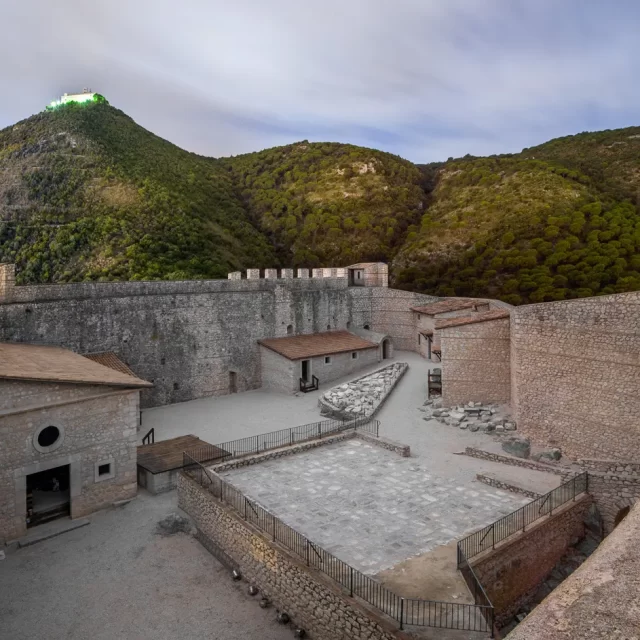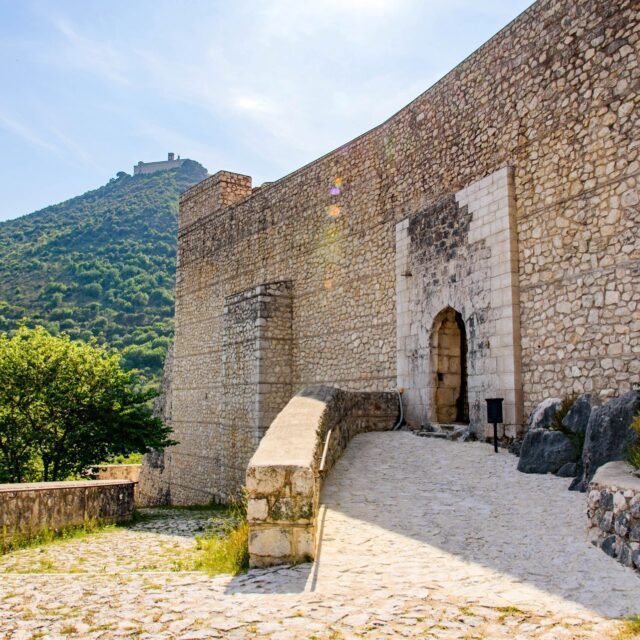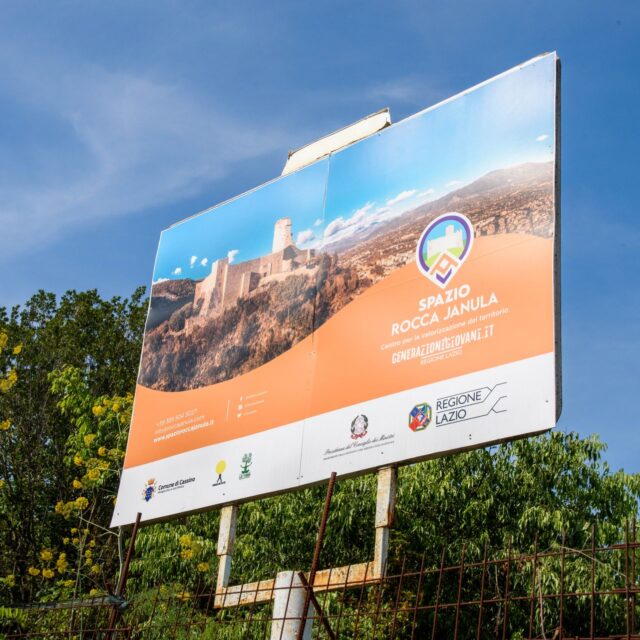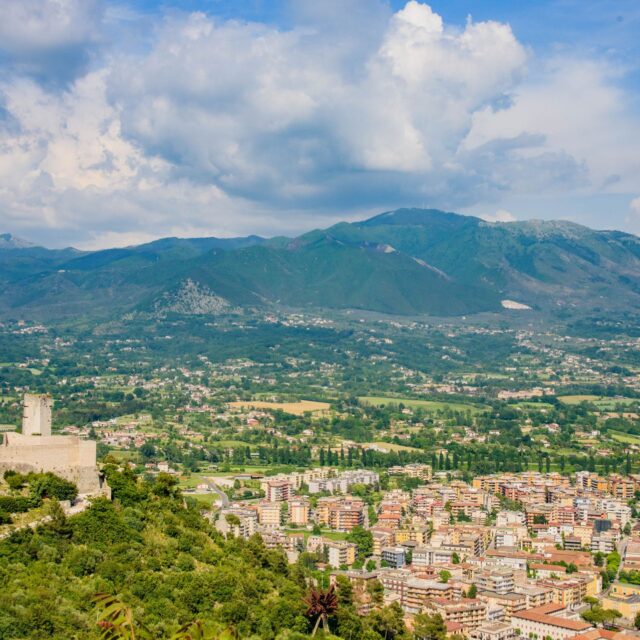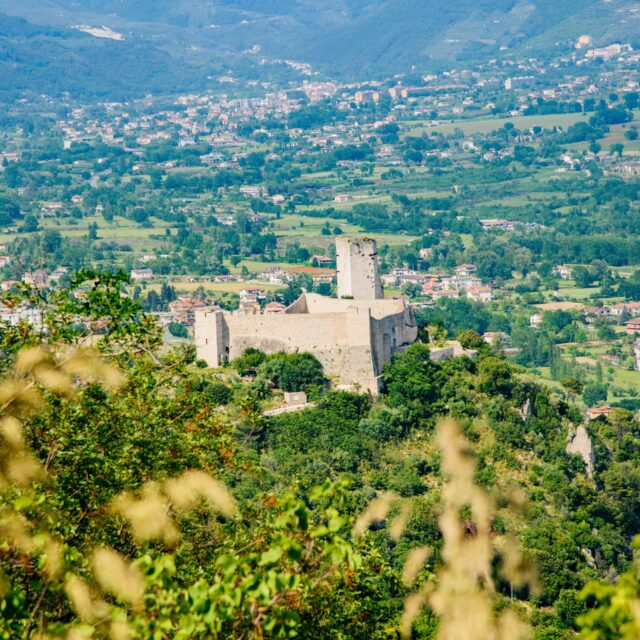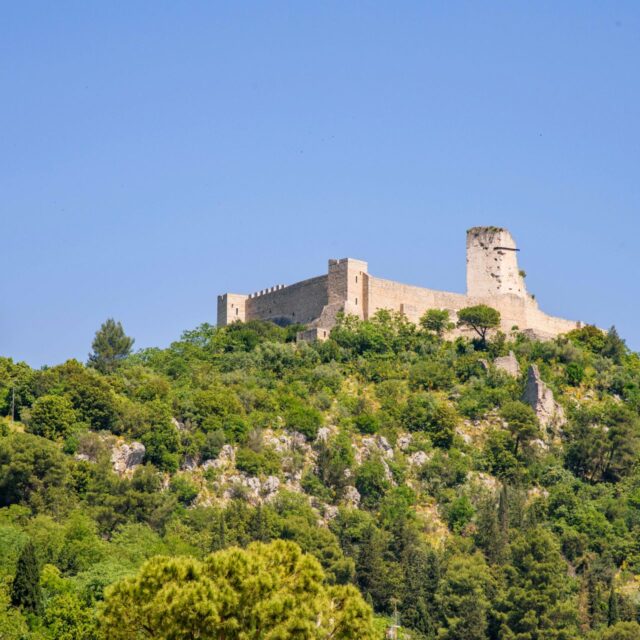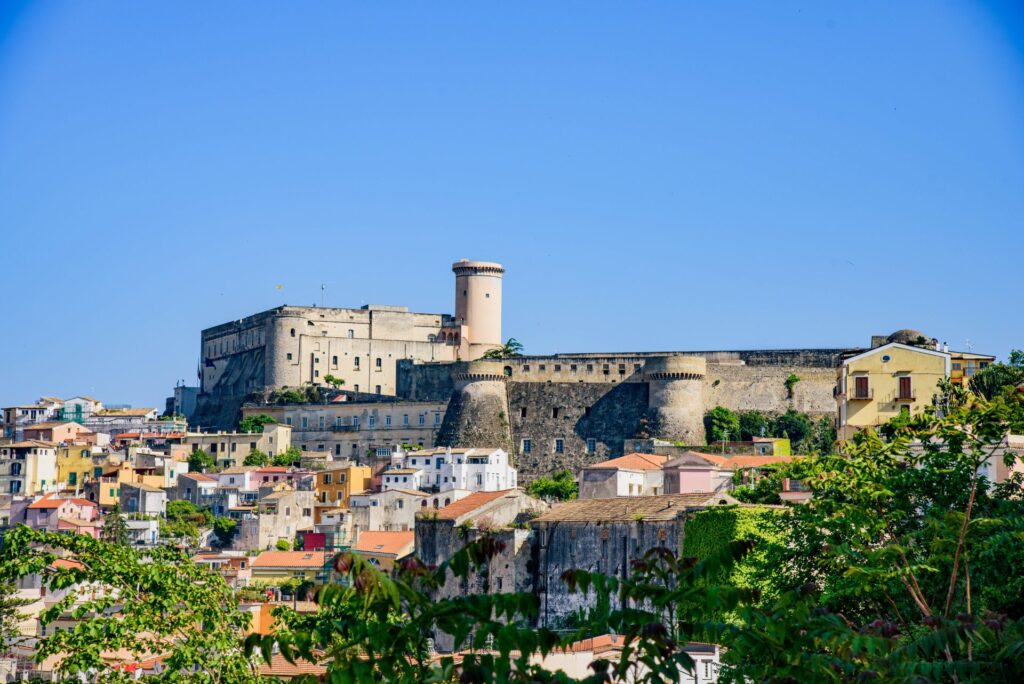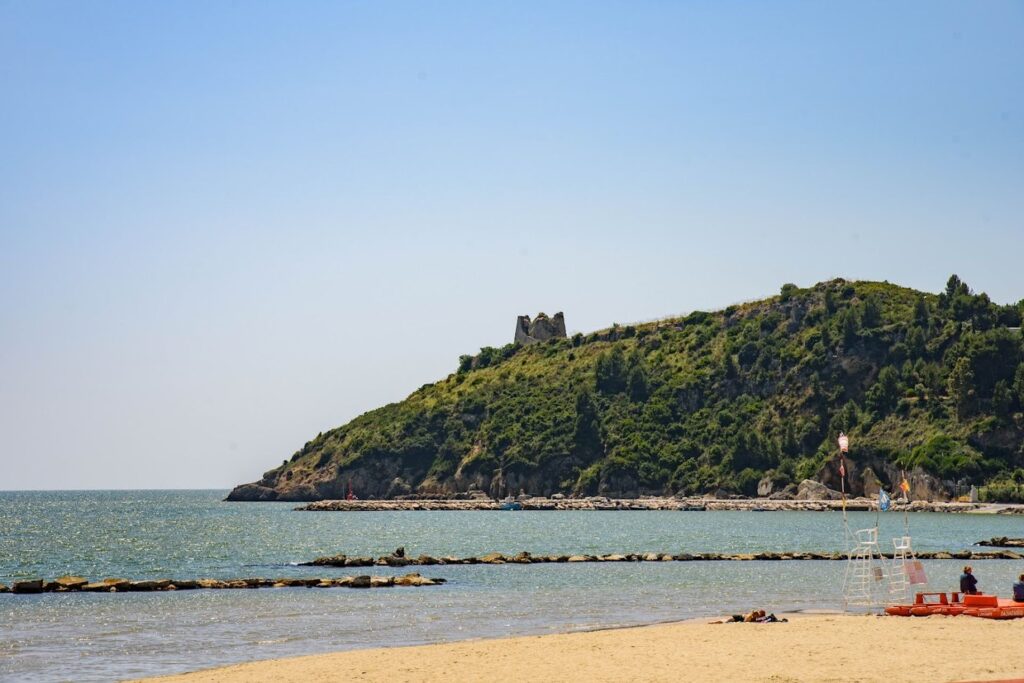Castles
Cassino
The Janula Fortress
The first castrum, with a quadrangular structure, was built on the Janulo hill around the middle of the 10th century by the Montecassino abbot Aligerno (949-986), to defend the abbey and the town of San Germano (ancient Cassino) from continuous enemy attacks. His successor, Abbot Mansone (986-996), reinforced and enlarged the walls, but the fortress, damaged by the severe earthquake of 1004, soon fell into ruin. It was occupied several times by the citizens of San Germano, who rebelled against the authority imposed by the monastery. It was liberated by Abbot Gerard (1111-1123), who consolidated the walls and had a pentagonal tower (20 m high) and a chapel built in the central courtyard. In 1200, Abbot Roffredo de Insula (1188-1210) provided the structure with additional walls, which also encompassed the settlement below.
In 1221, Rocca Janula was destroyed by Emperor Frederick II, but the reconstruction work began as early as 1229. In 1742, it was listed as state property and fell into disrepair due to neglect. During World War II, Rocca Janula was the site of fierce fighting between Germans and Anglo-Americans for the conquest of the monastery. The origins of the name are uncertain: according to some, it is linked to the presence of a temple dedicated to Janus; according to others, it derives from ‘janua’ (door), thus indicating the ‘small door’ to the Montecassino Abbey.

